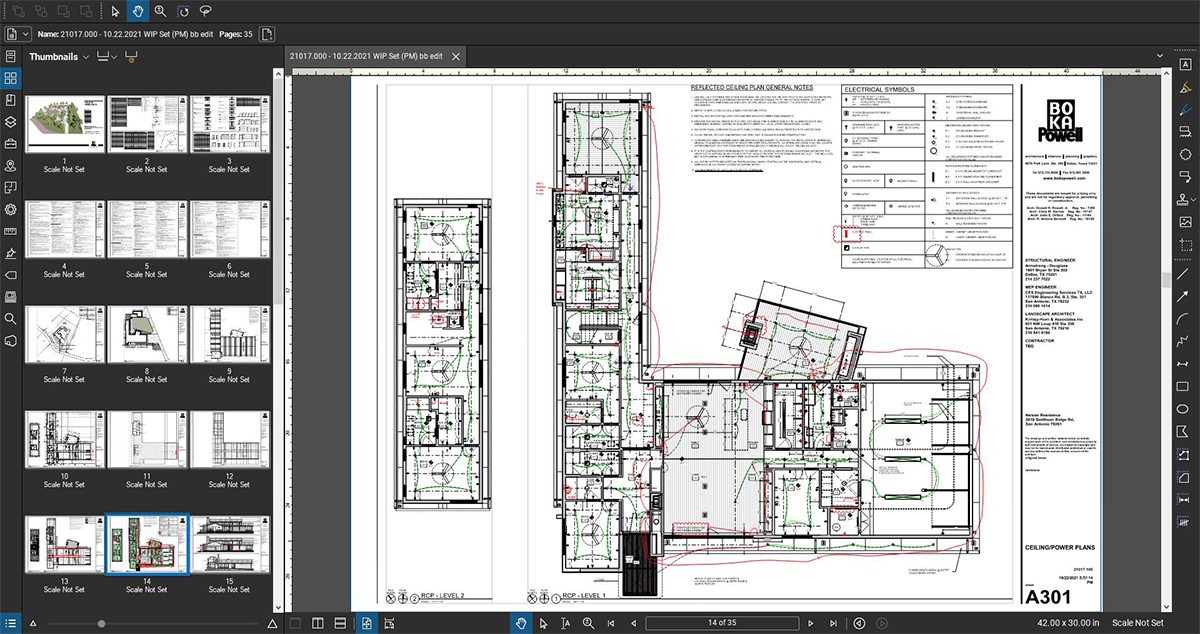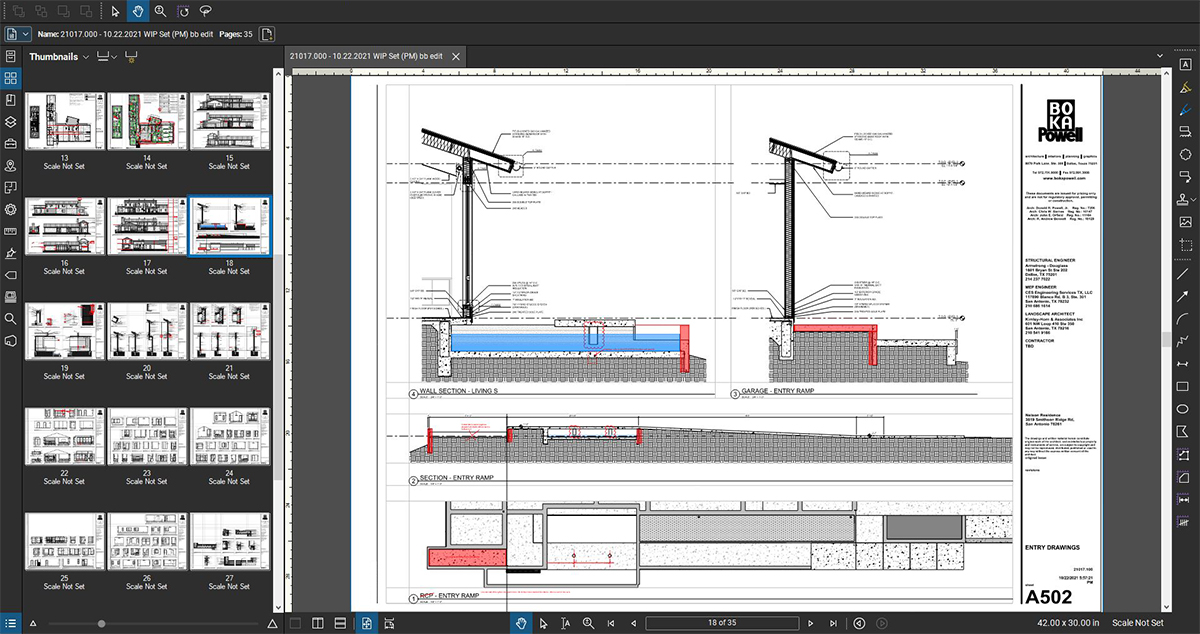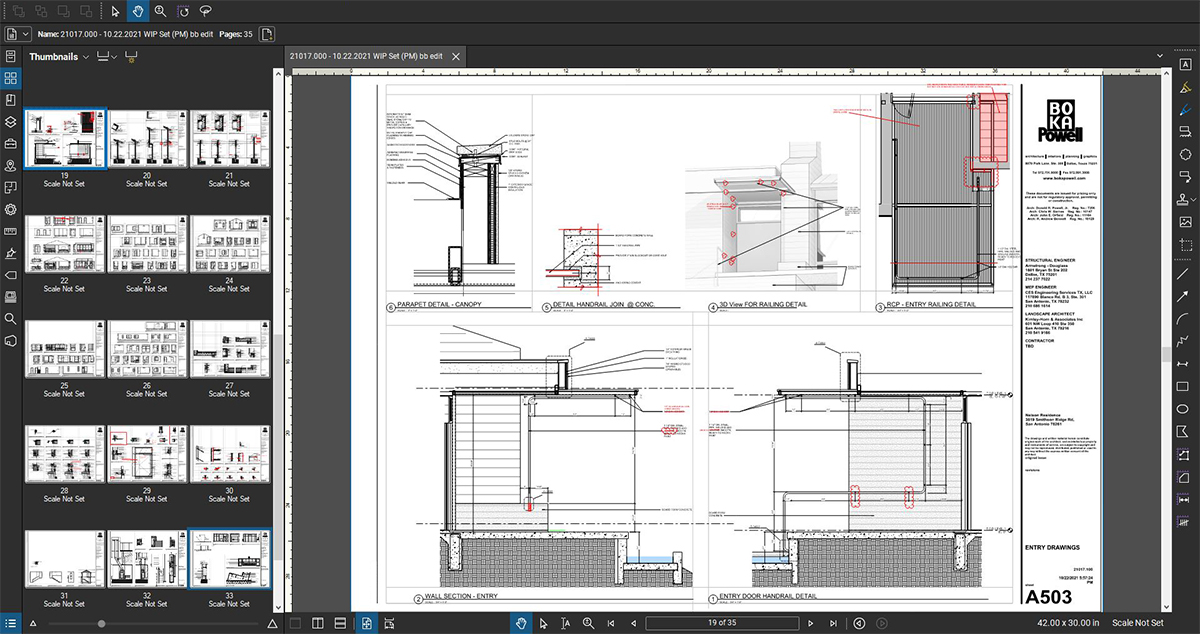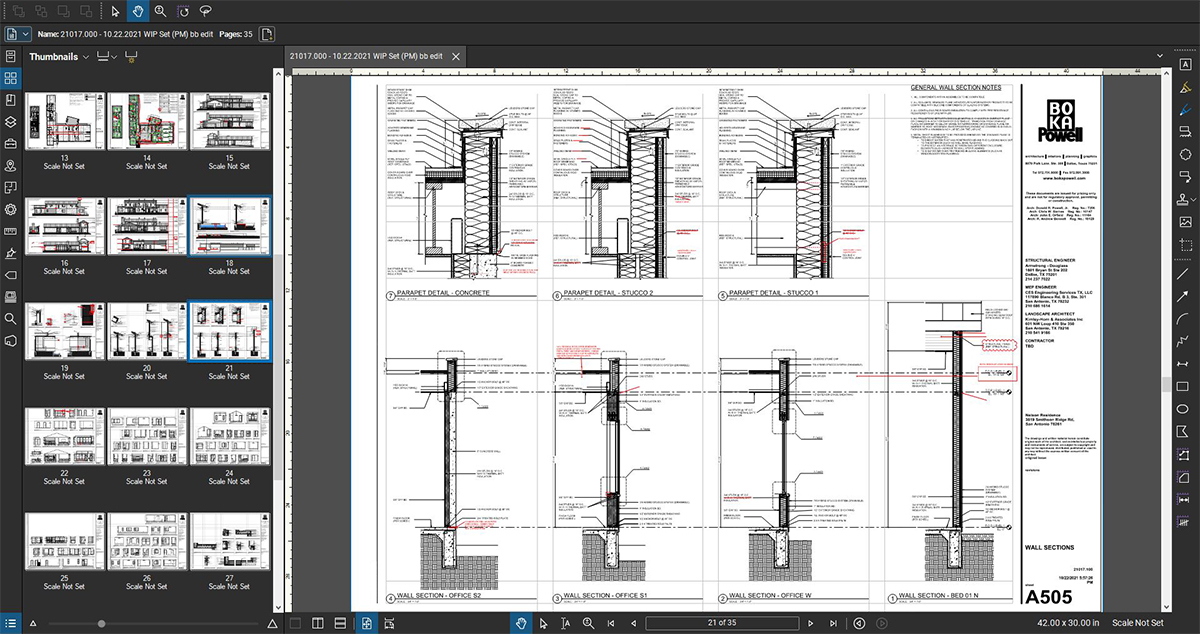Do architects draw too much? As I wrap up my weekend, where I spent the entire time reviewing and redlining sheet after sheet of construction drawings, especially after putting in a 60-hour Monday through Friday work-week, I find myself thinking that we are definitely drawing too much.
Is there something to this or am I just complaining? I should confess that I do love to design and work through details … I mean, I love it. I have always taken an unhealthy approach to how I draw and detail my projects and freely admit that I am a bit obsessive about it. I spend way more time than most people when it comes to preparing the documents, but I do this because it matters to me, and as a result, I think it should matter to everyone else. This is a topic I have been thinking about a lot – even more than normal – because I have the opportunity to evaluate what I should be doing since I received the green light to start a new dedicated residential studio here at the office. This means I can set things up the way I like it (a rare opportunity in a large and established firm like mine) and I can teach the freshly graduated young architects-in-training to the means of my madness.
We have several projects currently underway in the residential studio and the first one using my standards is just about ready to go out the door for permitting and selection of the contractor. As a result, I am hyper-focused on the quality of the information going into these drawings, but I think it’s possible that I have crossed over the line. I don’t think this is just a “Bob” problem but all architects are drawing more and more with each set of drawings they produce.
(all of the images in today’s post are from the set I spent this weekend reviewing … it’s a big part of why I am bringing this topic up)

It wasn’t that long ago that I could produce construction drawings for a 6-figure residential project in little more than a dozen sheets of drawings. The one I am working on now? The architectural set is hovering around 35 sheets as of today and there are drawings that I know we will still be adding. That is a 300% increase within the last 20-years. Once I add in the structural drawings, grading and drainage drawings, as well as the dedicated HVAC drawings, we will approach 60 sheets in this set.
What is going on? What is the reason for all the increased drawings? Is it the complexity of the projects? Maybe it’s because architects anticipate a contentious relationship with contractors? Maybe it’s the overly-specific design intentions that architects are wanting in our projects and we know that we can’t expect the contractor to read our minds?!?
Yes.
All of these things (and a few more) are contributing to the bloat that our drawings are undertaking. Is there a fix to this problem on the horizon, maybe something that I can do to simplify things? If there is, I haven’t figured it out yet.

I have currently prepared 252 individual drawings in this 4,200 square-foot house, yet all I see when I flip through the set are the questions that could potentially be coming my way from a contractor that I do not have a relationship with … so how do I tell them what I want, what they will need to price? I mention the bit about working with contractors I don’t know because I have personal experience with that. My favorite local contractor could build this house with half as many drawings because I know what his standard of care is and he knows what I expect. It makes things easy.
But there is a by-product to having a process like this in place, and it comes with the potential for bad just as it does for good.
The bad is that this contractor isn’t cheap and while he isn’t the most expensive, his assumptions come at an increased cost. For people who are trying to squeeze as much house out of their budget as possible, it demands that a clearer picture be painted before construction even begins … which requires me to draw more drawings. More drawings equal more time and additional effort, which also means that I am not typically the low-cost provider when it comes to architectural services. While I don’t think I am particularly expensive, this introduces the idea of customer expectations into consideration regarding the level of documentation. As the architect, you either have to go far enough to demonstrate the full scope of work or fall so short that there was never that expectation to begin with.

There is another reason that this is something that I have been devoting a lot of my energy towards considering. As we build up the residential studio in the office, I spend a fair amount of my time educating and instructing the people who are working on these projects in the nuances of residential construction – a task that, frankly, I enjoy considerably. I know that I could simply tell them what to do and they would do it, but we are building something here, and educating and creating understanding is far more important in the grand scheme of things. As a result, we go over as much as possible while discussing why certain decisions were made. What makes this interesting is that I am asked questions from time to time on how to detail something and I have to admit that I actually don’t know. Despite having almost 20 years of residential work under my belt, I have never detailed everything in a project. There is no doubt that I intend to have highly functional relationships with the contractors I work with and that together we will collaborate so that we can leverage the skills of all the people involved in the process rather than it simply being me as the architect, telling everyone else what they are supposed to be doing.

Another consideration that we are working through is that our standards in the office have been modified from documenting and detailing projects that can cost $100+ million dollars. There is a much different workflow to a commercial project than a residential project and I am trying to identify where those distinctions matter. We have had internal conversations about where the balance is between providing so much information that residential contractors see our drawing sets as obstacles to how they prefer to work, and providing enough information that bids are complete, the scope of work is clear, and the owners can take some comfort in the idea that they have a good understanding of the task that lies ahead.
Do Architects Draw Too Much?
So where do we land as a group on the question “Do Architects draw too much?” I am decidedly in the camp the believes that we are working at an untenable rate and that our drawings contain a level of information that exceeds the level of information required to build a successful project. There should be no doubt that there is value in answering as many questions as possible while still working through the drawings – few would dispute this. The real question is to find out where the line exists that defines the right amount of documentation because I’ll confess that I haven’t been able to find it. So in the meantime, I will err on the side of being over-prepared and deal with the consequences because the other options seem far worse.
Cheers – and carry on.

this is actually part of the “Residential Architecture 101” series. You can find all the entries in that series here
